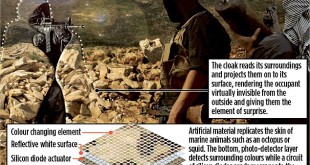The US Air Force Research Laboratory (AFRL) has awarded a new Distributed Radio Frequency Sensing (DRS) contract to Altamira Technologies for next-generation radio frequency (RF) sensing technologies.
Valued at $24.6m, the new cost-plus-fixed-fee contract will continue for a period of five years and will support the development of new RF sensing technologies through advanced research and development (R&D) of RF systems and sub-systems.
The latest advanced RF sensing technologies will be developed by applying DRS to contested and congested spectrum environments.
The project will focus on providing enhancements and upgrades in technology areas such as advanced waveform design, adaptive signal processing, sensing, and over-the-horizon radar.
Altamira has demonstrated its success with its patented Direct Spatial Antenna Modulation (DSAM) technology, which served as a major differentiator in the firm’s approach to delivering end-to-end capabilities for the US AFRL.
Altamira developed and patented a novel framework and approach to controlling antenna arrays that allows power pattern control and destruction of information as a function of angle at the electromagnetic wave level.
DSAM Spatial Information Control (SIC) technology enables groundbreaking spatially selective anti-jam and interference mitigation capabilities. This ability to utilize Spatial Information Control (SIC) is a significant departure from traditional antenna array technologies, which preferentially direct or receive RF energy but do not act on the contained information.
The ability to control the angular transmission or reception of information, in addition to the array power pattern, enables significant performance improvements in secure communications. SIC technology can be implemented in conjunction with existing protocols, waveforms, spread spectrum and cryptologic systems without impairment.
Distributed RF Sensing (DRS)
The objectives of the Distributed RF Sensing (DRS) are to conduct cutting edge R&D of RF system and sub-system technology concepts to provide next-gen radio frequency (RF) sensing technologies to external customers and the warfighter with the technology required for enduring success.
These objectives include:
- Development and demonstration of advanced sensor models, concepts, and technologies in existing and emerging RF intelligence, surveillance, and reconnaissance (ISR) sensor systems
- Improvement of active and passive RF sensor operation in stressing interference environments and against advanced and non-conventional targets and threats
- Development of target and environment RF scattering theory, computational electromagnetics, and radar measurements for efficient and accurate simulations of advanced radar operations in complex interference environments
- Perform extensive modeling and simulation, algorithm development, data analysis, experimentation, and validation to assess promising technologies, evaluate advanced concepts and ensure appropriate system-level trades are balanced as technology is matured
- Conduct radar measurements and experiments for validation and verification purposes
A key-enabling component is the use of sub and full-scale experimental assets in the form of the AFRL/RY Indoor Range, Outdoor Radar Range, Modeling Experimentation Sensor Analysis (MESA Grande) Laboratory, and mobile test resources associated with these. These assets will be provided as Government Furnished Services/Base Support.
DSAM enables secure communication in an unprecedented manner
Traditional secure coms rely on encryption, complicated waveform techniques, and require significant coordination and processing resources at both end of the link. But, DSAM allows information to be sent in a trusted direction, while the information is corrupted at the physical wave level when received from any other unauthorized angle.
This technology can be applied on top of an existing secure link granting added security in unauthorized directions and allowing nominal operation in the intended direction.
Uniquely, this technology can also be applied to communications when only a single side of the link is controlled, enabling increased communications security in situations inaccessible to traditional techniques.
ANTI-JAM
DSAM Spatial Information Control (SIC) technology enables groundbreaking spatially selective anti-jam and interference mitigation capabilities.
Traditional Anti-Jam Antenna Systems (AJAS) attempt to steer array pattern nulls towards a jamming source but are limited to a fixed number of nulls and are only able to target jamming signals after they are identified.
Advanced SIC is capable of reducing jamming and interference power by an order of magnitude for an unlimited number of jamming and interference sources.
GEO BREAKER
DSAM SIC Geolocation Prevention is next generation technology that degrades adversary abilities to perform direction finding and protects US military forces by preventing emitter geolocation.
Geo breaker leverages Altamira’s groundbreaking ability to:
- Control and alter the information content and spectral properties of an RF transmission seen in different directions
- Reduce the cross-correlation of each intercept, preventing Time Difference of Arrival (TDOA) techniques from being effective
- Prevents Angle of Arrival (AoA) geolocation techniques, with the unique ability to send different spectral content, and a spatially varying Doppler shift in directions away from the intended receiver. Adversary intercepts at different locations will fail to align.
References and resources also include:
https://www.altamiracorp.com/dsam-slick-sheet/
https://www.airforce-technology.com/news/altamira-afrl-drs-rf-sensing-technologies/
 International Defense Security & Technology Your trusted Source for News, Research and Analysis
International Defense Security & Technology Your trusted Source for News, Research and Analysis

